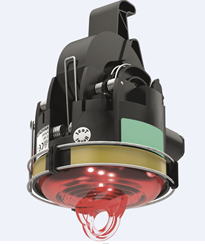Intelligent overhead line monitoring
We’re installing smart technology on our overhead power lines to get customers’ power back on quicker if there’s a fault.
In a six-year, $8.75 million investment, smart devices called remote Line Fault Indicators (LFIs) are being installed on overhead power lines throughout our electricity network.
The ‘Smart Navigator 2.0’ devices clip on to the lines between power poles and are a step towards digitalising our electricity network, with the aim of speeding up fault response for our customers.
So far, close to 700 sets of the devices have been installed on fault-prone locations throughout the network.
How they work
Attached to the line near the crossarm, the device measures the power line’s current, voltage and temperature, on average, every 15 minutes. If there’s a fault on a section of line, the device will flash a light indicating the direction of the fault. They then use the 4G communications network to report back to our Network Operations Centre (NOC).
“These LFIs provide additional visibility in real time of what is happening on the network. Those in the control room can see where the fault is, so instead of sending a crew to patrol the whole feeder to find the fault, which could take several hours, we can quickly pinpoint the area of the feeder that is affected, isolate the fault, and get customers reconnected," General Manager Electricity Karen Frew says.
LFIs are a part of a wider rollout of automation technology, designed to reduce the impact of unplanned power outages on customers. It includes increasing the remote control of switching points on the network, to be able to get the power back on sooner.

Above: A Line Fault Indicator, the same as those being installed on Powerco's overhead electricity lines (pictured at top on lines in the Coromandel region).

